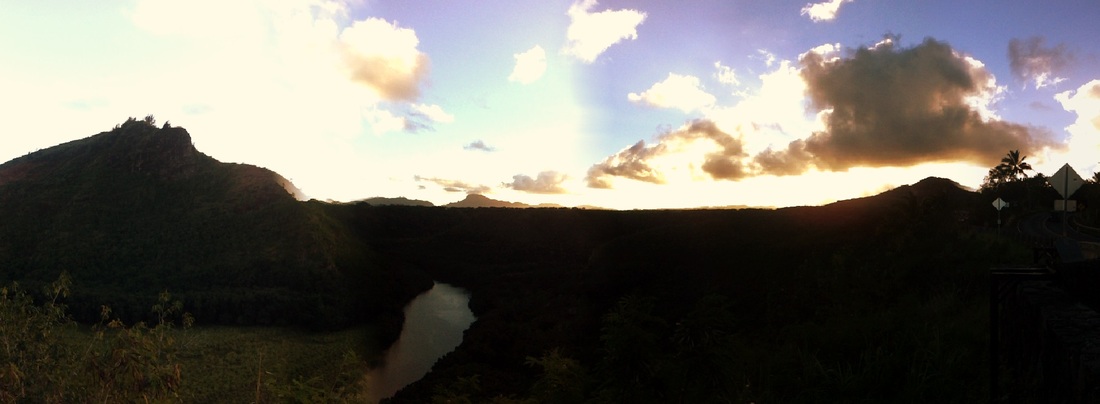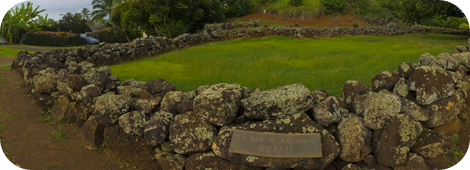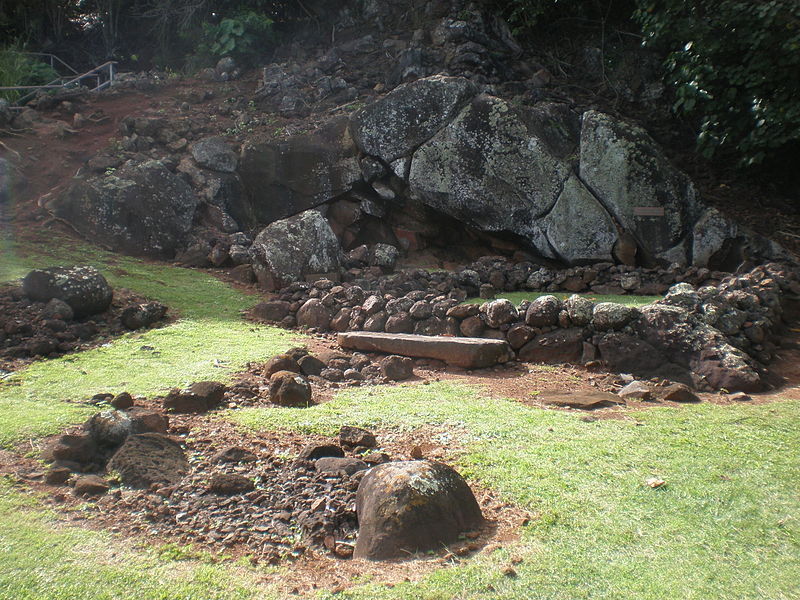The low stone wall you see, measuring 24 by 40 feet, marks the original foundation of the heiau. This heiau honored all of the Hawaiian gods, giving particular recognition to Ku. Ku literally means “rising upright,” as in the rising sun over the ocean nearby, and often the Hawaiians worshipped Ku for good fortune and prosperity in their endeavors. Archeologists believe animal or possibly human sacrifices were part of the worship here.
The modern staircase leads to a Japanese cemetery dating from the 1890s. Return to your car to continue up Kuamo‘o Road, built on an ancient path called “The Way of the Kings.” Many chiefs would travel along the Kuamo‘o or “Spine of the Lizard” on their annual pilgrimage, stopping at one of seven sacred sites, including Holoholoku, until they reached Mount Waialeale.



 RSS Feed
RSS Feed